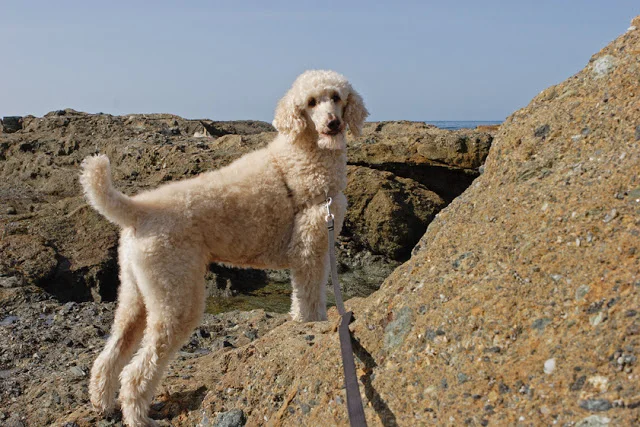I trained and photographed this happy guy years ago. :)
Mistakes are a normal part of life…right? We all make them but when we make mistakes in teaching our dogs, it can be the difference between understanding and not understanding for them. I see mistakes being made in dog training all the time. Mostly it is from trainers with little experience under their belt. They are out there trying to teach k9 guardians “how to” but they are doing it wrong themselves. A little error can make a big difference in how easily a dog “gets it.” Even long time dog trainers can get it wrong when they didn’t learn it correctly themselves.
The biggest mistakes I see being made are:
Calling a dog out of a stay. Why? By calling them out instead of officially releasing, you plant a seed that they will be coming to you at some point which weakens the stay.
Allowing a dog to eat (as a reward) what you have just told them to leave. Why? Like the stay, you are planting a seed that they are going to get what you have said is off limits. This weakens a leave it.
Not enforcing a stay. Why? You teach a dog that stay doesn’t really mean stay.
Using verbal cues incorrectly. Why? It is hard enough for dogs to learn in a simple, concise manner; mess it up and it is so much more difficult for them to learn.
Using a behavior marker incorrectly. Why? Because behavior markers can be very powerful. Use them incorrectly and they lose that power. I cannot believe when I see a trainer prompting a behavior with a clicker; the click is to follow a desired behavior.
Education is a never ending process. We are in a constant state of learning; even those with closed minds learn stuff just by living and experiencing. The difference is seeing better and doing better. I have seen other dog trainers completely confusing their human and canine clients by trying to teach something incorrectly.
Nine years ago I took Elsa to a puppy class strictly for socializing. We went through the obedience steps that were being taught out of respect for the trainer; but her real training was being done at home by me (her Mom). If they offered up incorrect information, we just skipped it and sat out. One of the things they had us do was to teach our puppies to go to a blanket. Elsa already knew this, so we showed off a bit. ;) The problem came when we were to get our dogs off of the blanket, click and reward. So we were to click for our puppy going on the blanket and click for off the blanket. This was extremely confusing for the puppies. Am I to be off or on? I simply tossed a little kibble off the blanket to get her off but did not click as I’d been told to do. It made no sense.
There are so many different trainers and methods of training out there. I try not to watch trainers who I do not want to learn from. Although I do like to watch k9 guardians working with their dogs; but have a hard time not helping when they are not my students. Keeping lessons clear, concise and simple is the way to teach our dogs. When we get into a muddy area due to a trainer not clearly understanding what they are doing; we can confuse our canine students.
Much of my training philosophy is based on common sense. I believe that common sense is far too underrated these days. That said, the common sense must be based on canine communication requirements. Meaning that if I use some method that my or your dog will not understand, it’s not going to have a great rate of success.
Dogs learn through the action/reaction process. What happens when they do something?
feedback - a reaction or response to a particular process or activity:
If the feedback or direction is not clear, then you venture into muddy water. Muddy water is fun to play in but not learn in.





















